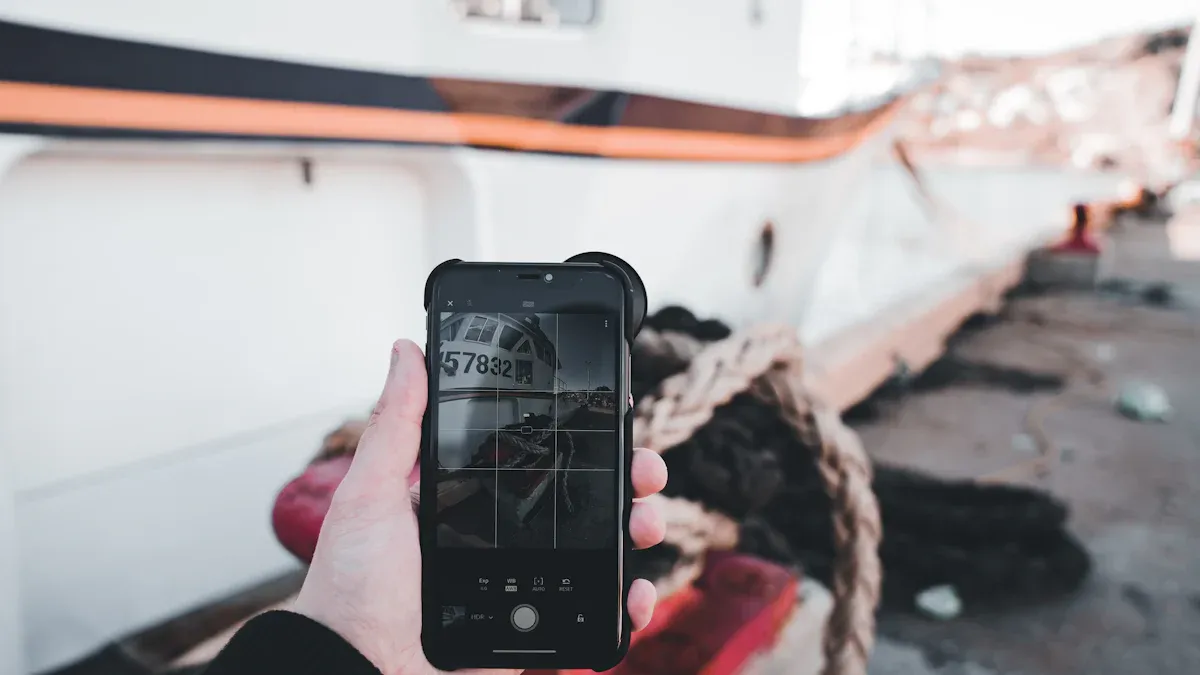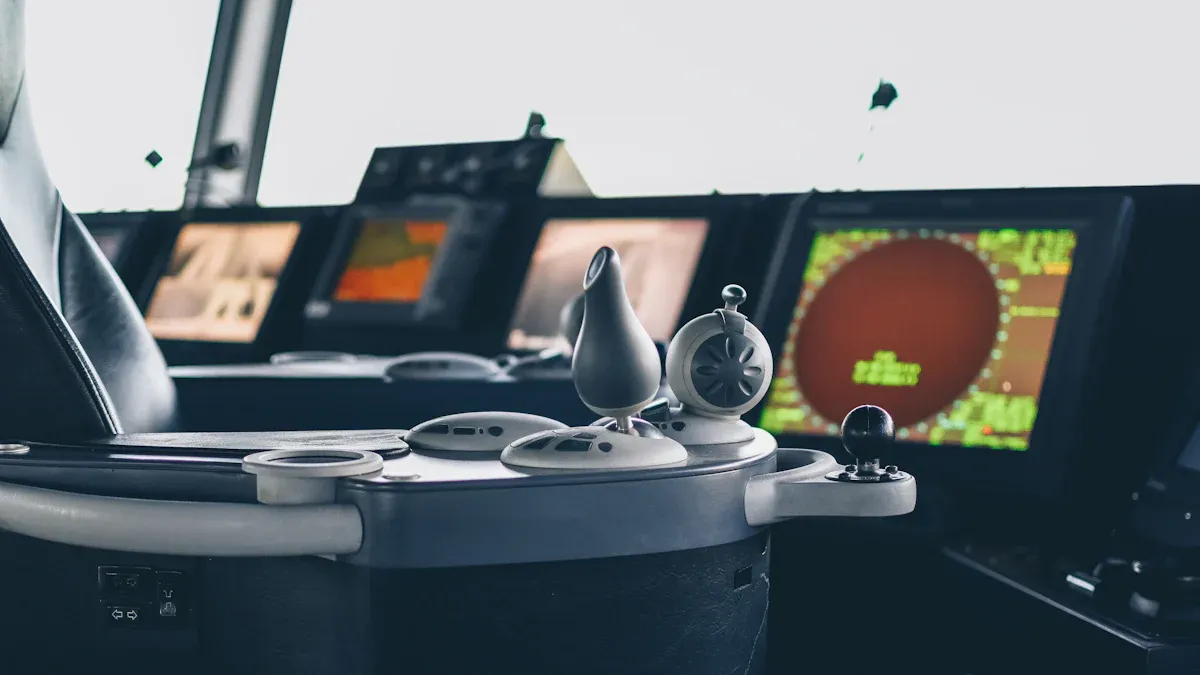
A Marine Industrial Telephone keeps ship crews connected, even in rough seas. People rely on it for fast, clear calls in emergencies. Options like the ATEX Industrial Telephone, analog Industrial Telephone, and IP Industrial Telephone help ships meet strict safety rules. Reliable phones prevent costly mistakes and support safe, smooth voyages.
Marine Industrial Telephone Features and Applications

Built for Harsh Marine Environments
A Marine Industrial Telephone faces some of the toughest conditions on the planet. Saltwater, high humidity, and constant vibration can damage regular phones, but these devices are different. Manufacturers test them in special chambers that spray salt fog and create humid air. These tests check if the phone’s materials can resist rust and corrosion. For example, companies use standards like ASTM B117 and MIL-DTL-5541 to make sure the phones last a long time, even when exposed to saltwater mist every day.
Marine telephones also go through life cycle and stress tests. Engineers shake, heat, cool, and soak the phones to see if they keep working. They even test the seals to make sure water and dust cannot get inside. This means the phones stay reliable, even when the ship faces storms or rough seas.
Some important features include:
- IP67 or higher water and dust resistance
- Corrosion-proof materials
- Shock and vibration resistance
- Noise-canceling microphones for loud environments
Compliance with Maritime Standards
Ship owners cannot just pick any phone for their vessels. Every Marine Industrial Telephone must meet strict rules set by groups like the American Bureau of Shipping (ABS). ABS checks the design and manufacturing process, making sure the phones meet global safety and quality standards. Their certification lasts five years, unless the product changes.
Other important certifications and standards include:
- ISO 9001:2015 for quality management
- DNV for international maritime approval
- UL for safety in hazardous areas
- BS 5609 for labels that survive in seawater
Over 100 governments recognize ABS standards. This makes it easier for ships to pass inspections and keep their crews safe.
Integration with Shipboard Communication Systems
Modern ships use many systems to keep everyone connected. A Marine Industrial Telephone can link with satellite communication, intercoms, and even data tracking tools. This integration helps the crew talk to each other, call for help, or send information to shore quickly.
Maritime experts have seen big improvements when ships use integrated systems. For example, Deep BV switched from regular phone calls to a system that connects everyone—onboard and onshore—through one network. This change made communication faster and more reliable. It also allowed smaller crews to work safely, saving money and helping the environment.
Integrated systems let ships connect with other vessels and land offices, even across the globe. This means help is always just a call away.
Main Uses in Modern Shipping
A Marine Industrial Telephone does more than just make calls. It supports many tasks that keep ships running smoothly and safely. Here’s a quick look at some main uses:
| Technical Specification / Feature | Description / Application |
|---|---|
| Satellite Communication Systems | Faster, more stable ship-to-shore communication |
| Integrated Voice and Data Solutions | Combines voice, data, and tracking for seamless operations |
| Digital Technologies | Compact, easy-to-use devices with advanced safety features |
| Durability and Environmental Resistance | Withstands harsh marine conditions for longer device life |
| Real-time Monitoring & Automated Distress | Helps with safety and emergency response |
| Product Types | Wired and cordless phones for yachts, sailboats, and commercial ships |
| Emerging Technologies | Uses 5G, AI, and hybrid systems for better performance |
Crews use these phones for:
- Emergency calls and distress signals
- Daily operations and maintenance
- Connecting with other ships or shore offices
- Sending and receiving important data
A Marine Industrial Telephone keeps everyone in touch, no matter where the ship sails.
Marine Industrial Telephone Benefits and Selection

Enhancing Safety and Operational Efficiency
A Marine Industrial Telephone does more than connect voices. It helps crews work safer and faster. When ships use advanced communication tools, they cut down on mistakes and accidents. For example, HoistCam gives operators real-time video feeds. This technology lets them see blind spots and talk clearly with ground crews. As a result, tugboat operators and port authorities report fewer accidents and faster turnaround times. Tideworks Technology also shows how better communication systems help ships avoid congestion and plan better. These tools make daily tasks smoother and keep everyone safer.
When crews can see and talk to each other without delay, they avoid costly errors and keep operations running smoothly.
Supporting Crew Communication and Emergency Response
Clear communication saves lives at sea. When emergencies happen, every second counts. Studies show that poor communication can slow down response times and increase risks. The table below shows how communication failures affected two real maritime incidents:
| Maritime Incident | % Communication Failures | Impact on Response and Safety |
|---|---|---|
| Stena Feronia Collision | 60% | Unclear VHF calls caused delays, leading to slower emergency response and higher accident risk |
| Hamburg Grounding Incident | 45% | Poor bridge team communication led to slow responses and bad decisions |
A Marine Industrial Telephone gives crews a reliable way to call for help and share updates quickly. This support can make the difference between a close call and a disaster.
Choosing and Installing the Right Marine Industrial Telephone
Picking the right Marine Industrial Telephone means looking at the ship’s needs. Some ships need phones that work in noisy engine rooms. Others need waterproof models for open decks. Crews should check for features like noise-canceling microphones, strong seals, and easy integration with other systems. Installation should follow safety standards and manufacturer guidelines. A good fit keeps the crew connected and ready for anything.
A Marine Industrial Telephone keeps ships safe and connected. Crews use these phones for daily work and emergencies. The table below shows why they matter:
| Aspect | Details |
|---|---|
| Market Size (2023) | USD 1.2 billion |
| Safety Role | Essential for accident prevention |
| Growth Drivers | New tech, safety rules, more sea trade |
These phones help ships run smoothly and protect everyone on board.
FAQ
What makes a marine industrial telephone different from a regular phone?
A marine industrial telephone resists water, salt, and shock. It works in loud, wet, and rough places where normal phones would fail.
How do crews use these phones during emergencies?
Crews grab the phone and call for help fast. The phone connects them to the bridge or shore, even if the weather gets bad.
Can a marine industrial telephone connect with other ship systems?
Yes! These phones link with intercoms, alarms, and satellite systems. This helps everyone stay in touch and react quickly.
Tip: Always test the phone before leaving port. This keeps the crew safe and ready.


